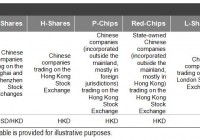Korean ETF Offers Investors Chance For Growth
EWY is weighted heavily towards the information technology and consumer discretionary sectors. Korea is a technology-based economy composing of companies who are industry leaders in their respective fields and have strong earnings. EWY provides targeted access to Korean stocks and is a good measure of the economic strength of Korea; rating agencies are optimistic in growth prospects of Korean economy. By Harry Lee Korea is currently offering investors a solid mid-term growth opportunity at a good value through the iShares MSCI South Korea Capped ETF (NYSEARCA: EWY ). EWY is down 16% overall from its high at 62.93 in April, due to a strong U.S. Dollar, the devaluation of the Chinese yuan, and the crash in equity prices in China this past summer. Fundamentally, however, the Korean economy itself not remarkably declined in a way that justifies the 16% decline in EWY’s price since July of 2014. This has created a solid entry point for investors looking for strong growth potential over the mid term. EWY’s Sector Weights and Sector-Specific Performance EWY is heavily weighted towards the information technology and consumer discretionary sectors. Hence, when evaluating EWY, we must examine the individual performances of those individual sectors and their long-term growth prospects, rather than solely scrutinizing at the performance of the national economy as a whole. Samsung Electronics ( OTC:SSNLF ) is the largest component, at 21.99%; Hyundai Motors ( OTC:HYMPY ), Naver Corp. ( OTC:NHNCF ), and others trail between 2~3%. In its most recent earnings report, Samsung posted quarterly revenue of $45 billion, up 8.9% year-over-year. Profits were $6.45 billion, up an astonishing 82%. Despite mounting pressure from competitors such as Apple and Huawei on both the high and low-ends, respectively, Samsung’s profits expect to be relatively protected due to its semiconductor business. Samsung’s semiconductor business supplies Apple (NASDAQ: AAPL ) with the A9 chip processor used in Apple’s flagship iPhone 6 and iPhone 6S models. Hyundai Motors is also expected to have good growth prospects. Despite posting record low profits in Q3 of 2015, they recently announced that they would launch a new global luxury car brand called Genesis, targeting large fat profit margins from the higher end of the market. Building off of its current luxury models, the Genesis line will launch with two luxury sedans aiming to combat both the European luxury brands of BMW ( OTCPK:BAMXY ), Mercedes-Benz, and Audi ( OTCPK:AUDVF ), but also Nissan’s ( OTCPK:NSANY ) Infiniti and Toyota’s (NYSE: TM ) Lexus. Investors reacted positively to the news, with Hyundai shares closing 1.85 percent higher at a one-month peak. Considering all these factors, the prospects for growth in the mid-term are quite optimistic. Performance of the South Korean Economy as a Whole Investing in an ETF that closely tracks the performance of the Korean economy is a solid investment because South Korea has a number of economic advantages, including a highly advanced economy (nominal GDP is ranked at 13th highest); a low debt-to-GDP ratio and an accommodative central bank. Recently, the Bank of Korea maintained interest rates at 1.5 percent, but drastically cut the benchmark borrowing costs in half over the past three years in an attempt to defend domestic exporters against the Chinese exporters in a climate of a devalued Chinese yuan. Moreover, Standard & Poor’s upgraded Korea’s credit rating to AA- this past September, the highest rating in nearly two decades. It expressed optimism in the growth prospects of the peninsula, claiming that it was likely to maintain economic growth higher than the bulk of the developed economies in the next three to five years. S&P also expressed optimism at the overall decline in external debt owed by Korean banks and reduced short-term borrowing in total external debt. Conclusion Korea’s world-leading electronics industry, along with optimism in the auto industry appears encouraging for the information technology and consumer discretionary sectors within Korea, both of which are significant components in EWY. A vigorous but an accommodating central bank that is willing to devalue its currency to defend domestic producers and exporters should prove encouraging for the mid-long term growth prospects of the economy as a whole. Despite these positive facets, an investment in EWY is not entirely risk free. Samsung Electronics’ flagship mobile division could underperform, leading to the firm missing analysts’ expectations and driving both the equities of the firm and EWY down; Hyundai’s new luxury brand may not become a cornerstone of automotive luxury as Lexus and Infiniti have become. In conclusion, though, there are many factors that point to an optimistic long-term future for Korea, though it is not without risk. The current pricing appears to be a good point of entry, as a series of recent global circumstances have depressed EWY below its true value. Editor’s Note: This article discusses one or more securities that do not trade on a major U.S. exchange. Please be aware of the risks associated with these stocks.
